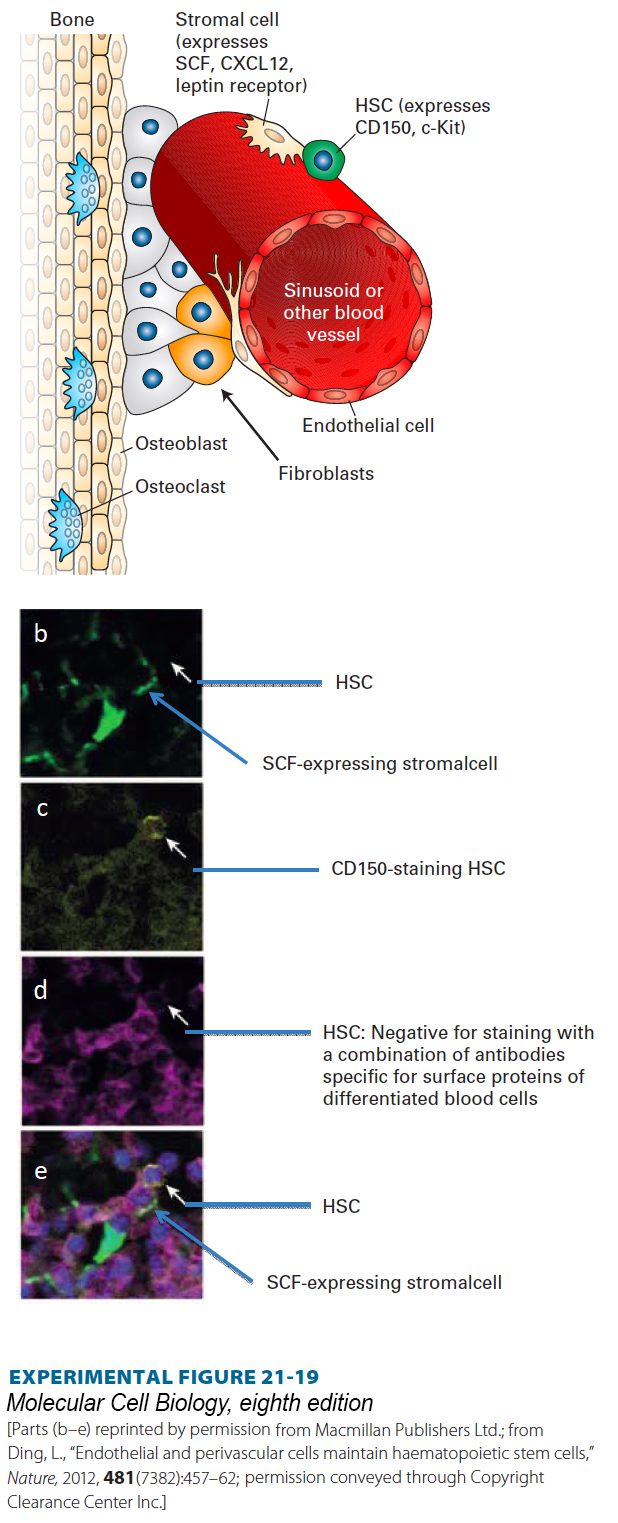
EXPERIMENTAL FIGURE 21- 19 The hematopoietic stem- cell niche in the bone marrow. (a) The bone marrow contains dozens of different types of cells, including osteoblasts and osteoclasts that build and degrade bone, respectively, as well as multiple types of hematopoietic cells, fibroblasts, and other cell types. The bone marrow is permeated by small blood vessels termed sinusoids. The predominant cells that form the HSC niche are the very rare mesenchymal stromal cells that adhere to these vessels and that express a combination of cell- surface proteins including SCF, the hormone that binds to and activates the c- Kit protein tyrosine kinase receptor on HSCs. These stromal cells also express the receptor for the cytokine leptin and secrete CXCL12, a chemoattractant for HSCs. See S. Morrison and D. Scadden, 2014, Nature 505:327. (b– d) Immunofluorescence detection of HSCs and niche cells in bone marrow, showing that HSCs are localized next to SCF- expressing cells. Antibodies to SCF were not available, so in order to detect SCF expression, a mouse was generated in which GFP cDNA was placed in the SCF gene locus and expressed only in cells that normally produce SCF. Bone marrow sections were then examined in a fluorescence microscope to detect the SCF- expressing cells (b). To detect HSCs, the sections were stained with an antibody to the CD150 protein, expressed in HSCs (c). The sections were also stained with a collection of antibodies (d) specific for proteins expressed by different types of differentiated blood cells, but not by HSCs. (e) When the three images are merged, the HSC (white arrows) can be seen lying adjacent to the SCF- expressing stromal cell.
[Parts (b– e) reprinted by permission from Macmillan Publishers Ltd.; from Ding, L., “Endothelial and perivascular cells maintain haematopoietic stem cells,” Nature, 2012, 481(7382):457– 62; permission conveyed through Copyright Clearance Center Inc.]
[Leave] [Close]